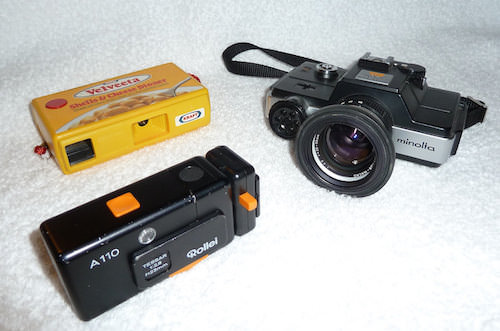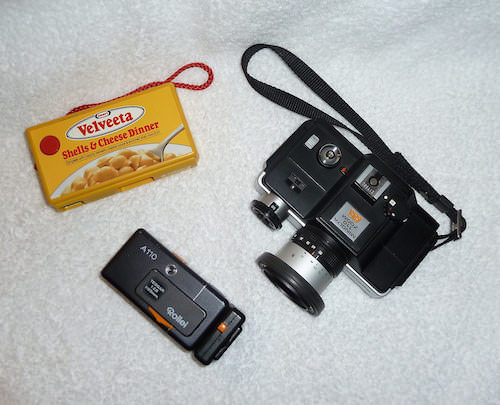In high school, I really wanted a Minolta 110 ‘Zoom’ SLR. It had feature like auto focus and manual over-ride, as well a light/dark compensator and a zoom lens. Particularly, I liked the small size (and cool shape). My fellow photographers set me straight about what I needed, being able to print large pictures that required 35MM or 120 films, the 110 was just too small.
Now, I have a Minolta 110 SLR and Pentax Auto110 that I enjoy snapping shots around town. Sure, it won’t allow for unedited large prints to be made. Even the small 110 film size though can create images that are way more than is needed for online usage. The auto focus and zoom of the Minolta, and the manual focus and variety of lenses of the Pentax.
Film photography means that some forethought is required. There is no way to see what was just captured till the film is developed and printed. Also, there is no instant digital ‘filters’ and editors for film. But, that is a big part of the fun using film cameras.
While the Minolta 110 SLR had all the great features (here is a PDF of the camera’s manual), there were many more 110 film cameras that did little more than a pinhole camera does. Film can be advanced and a shutter activated to expose that film. The lower tech options where popular as advertising devices. If you carry a camera to all of the family get togethers that was acquired for free from a company, the logo on the camera is seen by everyone… marketing.
Kodak made a line of 110 film cameras that had a few more options than the freebies, but no where near that of the Minolta 110 SLR. Actually, there was another very memorable more powerful 110, the Rollei A110. The camera took years from concept to actually be manufactured. It is very small, made of metal and Delrin, as well carried the cool spy camera feature of advancing the film when the camera is opened/closed.
The Rollei even has viewfinder viewable info to help set the camera to best photograph different opportunities.




